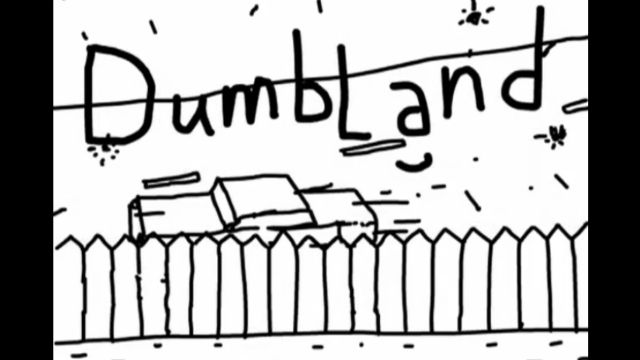Perhaps no other director in the history of film has a voice as unique as David Lynch. A painter at heart, Lynch spent five years working on his very first film, Eraserhead, throughout the mid-1970s. Since then, he has been working to synergize the world of art and the world of film. As he is likely to say to anyone who asks, Lynch proudly lives what he calls “The Art Life”—a life dedicated to art and the creative process. He spends years planning each project, whether it be a feature film or a television show or some combination of the two (like 2017’s Twin Peaks), and the end result is always nothing short of magnificent.
Lynch has relatively small filmography—only ten films and three short-lived television projects—but an extensive list of short films. For over 50 years, since 1966, Lynch has churned out over 40 short projects (many of which were uploaded to his subscription-based website in the late 2000s). They’re all special in their own uniquely Lynchian ways, but some stand out far more than the rest.
DumbLand

DumbLand follows an absurd and (as the title suggests) dim-witted family through a series of eight roughly animated black-and-white shorts. Lynch does all the writing, directing, animating, and voice acting himself, and the end result is truly hilarious in ways that most of his feature films only show briefly. His sense of humor is as inspired as he is, and there are actually quite a few great jokes throughout these eight frantic short films.
Premonitions Following an Evil Deed
Clocking in at only 52 seconds, this 1995 short was filmed using the very first movie camera, the Cinématographe camera invented by the Lumière brothers in the 1890s. It was made in conjunction with 40 other filmmakers to commemorate the 100th anniversary of the camera, and had to abide by three specific rules: A short may be no longer than 52 seconds. No synchronized sound. No more than three takes. Lynch’s take on the project is easily the most impressive of the bunch, and it really manages to feel like a Lynch project despite its ancient methods.
Out Yonder: Teeth
Originally posted on his website in 2007, Lynch’s Out Yonder: Neighbor Boy stars himself and his son Austin as two nitwits speaking in near-incomprehensible slang. They spend the short concerned about teeth, and you’ll see why once you watch the short. It seems that short films are really the easiest way for Lynch to express his lighter, funnier side, and it’s definitely a welcome addition to his short film collection.
The Grandmother
Filmed not long before the production of Eraserhead, The Grandmother is one of the first shorts where Lynch’s style is really able to come through. The story follows a boy who plants some seeds and grows a grandma, but the imagery and style is really what stands out here. The way he films this short and the way he designs his sets is unsettling and kind of disturbing in ways that would truly shine in his future films.
The Alphabet
This short came two years before The Grandmother, but the immense talent is still able to shine through just as brightly for such a dark short. A young girl’s nightmare about the alphabet coming to life and haunting her might end up causing some nightmares for you, as well.
Rabbits
David Lynch clearly likes what he did with 2002’s Rabbits, because many scenes from it ended up in his 2006 film Inland Empire. There isn’t much going on—three rabbits living as humans do, ironing, wearing clothes, watching TV—but it’s so much more unsettling for that very reason. Shadows cast on the walls, rain falling outside, and a booming laugh track all haunt these poor animals (and the audience too) throughout the short’s 42 minute running time.
Absurda
You might say that Absurda is a look at what it’s like to watch a David Lynch movie. While it’s only two minutes long, it’s still impactful enough to leave you with goosebumps afterward. The short follows an audience watching a film, only for one woman to discover she’s the one being watched on-screen. It’s an unsettling thing to think about, similar to the inciting incident in Lost Highway where a VHS tape shows up on the doorstep of an unsuspecting couple that shows them sleeping, and that’s why it ends up being so effective in so few minutes.
Sailing with Bushnell Keeler
When David Lynch was a Boy Scout, sometime in his late teens, he met a painter named Bushnell Keeler through Keeler’s son, Toby. Bushnell Keeler became something of an inspiration and a mentor for Lynch, and he eventually inspired him to pursue painting full-time by giving him the means and the resources necessary to do so. Sailing with Bushnell Keeler is referred to as a home movie by Lynch, simply showing Keeler, Lynch, and Keeler’s brother Dave sailing on the Chesapeake Bay in Bushnell’s boat. It’s pleasant and wholesome and a great look at Lynch’s beginning.
Six Men Getting Sick
This short, made in 1967, is what started it all. Lynch’s very first moving painting. While still a student, Lynch was painting when he said, out of the corner of his eye, the wind had moved something on his canvas. From there, he made it his life’s mission to blend film and painting into one. This short features what the title suggests, accompanied by a wailing police siren.
Absurd Encounter with Fear
Another one of Lynch’s earliest shorts, Absurd Encounter with Fear is exactly what you’d expect. He plays with colors, sounds, and camera tricks to create a short that tells you all you need to know about his style, his recurring themes, and his inspiration for filmmaking.










